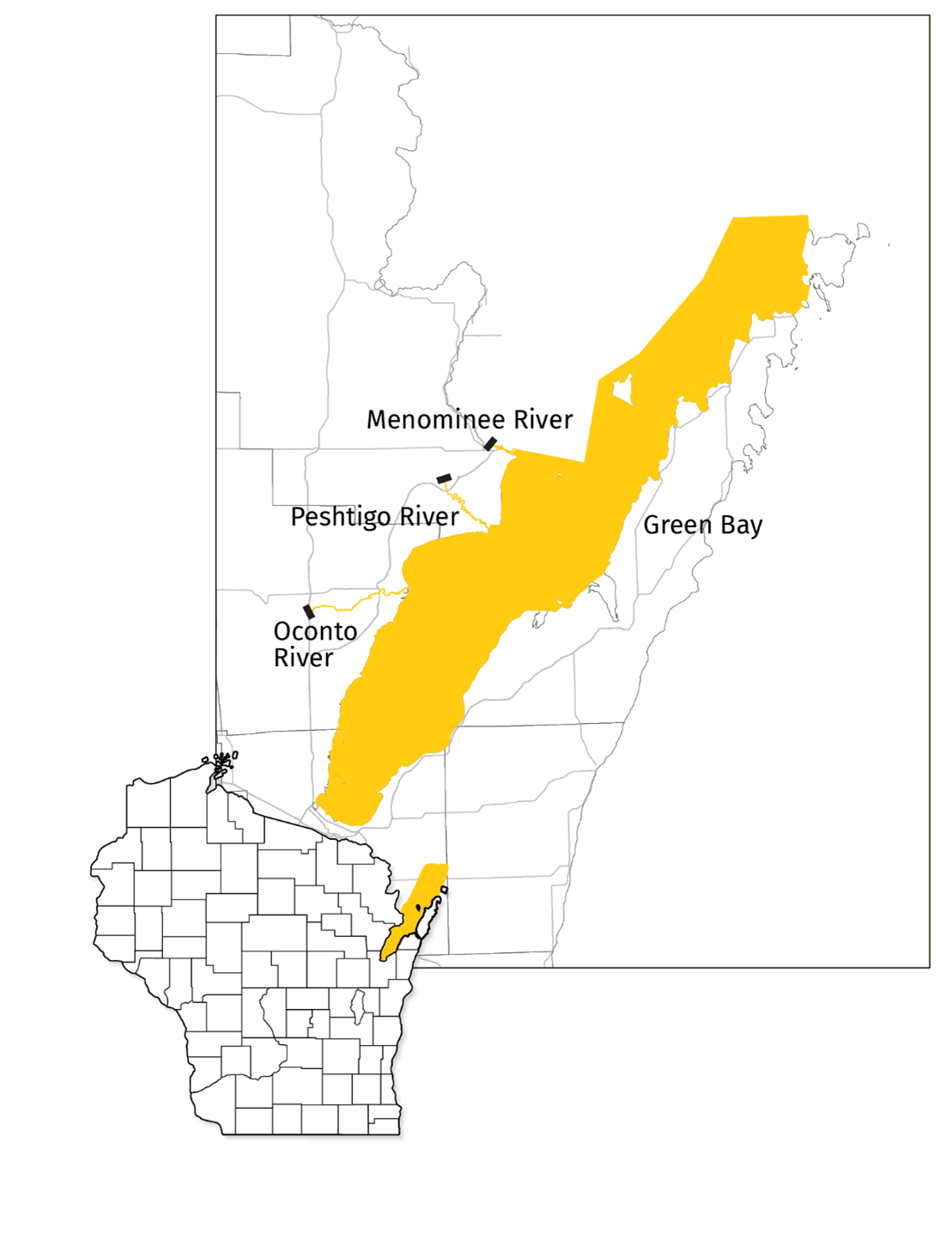|
FOR IMMEDIATE RELEASE:?May 4, 2023
Contact:?DNR Office of Communications
[email protected]
DHS Communications
[email protected]
New PFAS Fish Consumption Advisory For Green Bay And Associated Tributaries
Elevated Levels Of PFAS Found In Rainbow Smelt
?
MADISON, Wis.?? The Wisconsin Department of Natural Resources (DNR) and the Department of Health Services (DHS) today announced a new PFAS-based consumption advisory for the Bay of Green Bay and its tributaries.
Elevated levels of perfluorooctane sulfonate (PFOS), a type of per- and polyfluoroalkyl substances (PFAS), were detected in rainbow smelt sampled from Green Bay. As a result, the DNR and DHS recommend consuming only one meal per week of rainbow smelt from the Bay of Green Bay and its associated tributaries up to the first dam, including portions of the Peshtigo, Oconto and Menominee rivers.
?Eating locally caught fish is a cost-effective way to feed your family a lean, healthy protein. This advisory, like our long-standing mercury and polychlorinated biphenyl (PCB) advisories, is another way to ensure our anglers who eat their catch are provided with the right information to consume fish safely,? said Lori Tate, Fisheries Management Section Supervisor.
PFAS are a group of human-made chemicals that have been used for decades in various products, such as non-stick cookware, fast food wrappers, stain-resistant sprays and certain types of firefighting foams that have made their way into the environment.
Health risks may increase when fish with high levels of PFAS are consumed more frequently than recommended. These can include increased cholesterol levels, decreased immune response, decreased fertility in women, and cancers, among other health effects.?More information is available on the DHS website.
Following fish consumption advisories will help protect you from consuming excess PFOS, PCBs and mercury. A complete list of up-to-date consumption advisories can be found in the DNR?s?Choose Wisely booklet.
Additional?fish consumption advice?and information on the?effects of PFAS?can be found on the DNR?s website.

|
